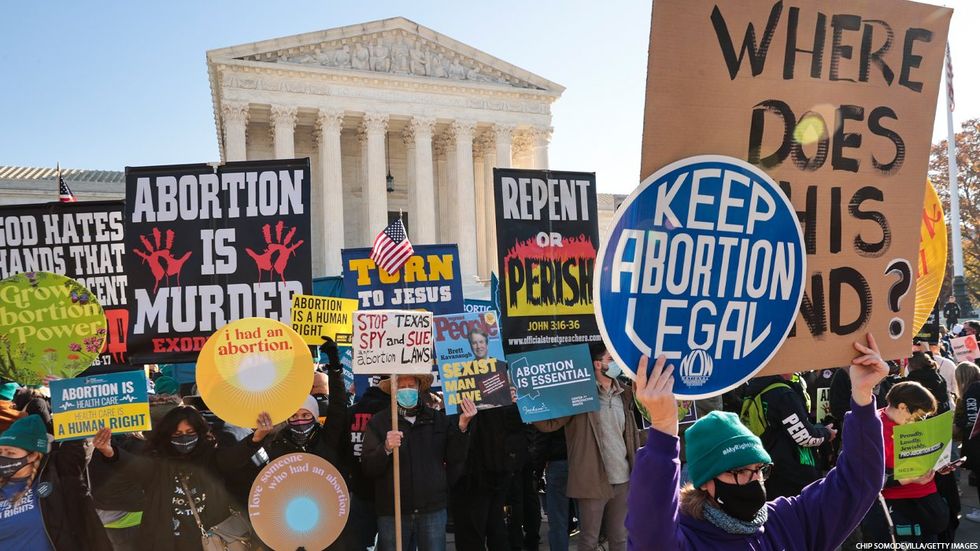One year after the overturning of Roe v. Wade, which guaranteed abortion rights nationwide, the legal landscape is as bad as reproductive rights advocates expected, with many conservative states banning or severely restricting the procedure — and most of the same states, not coincidentally, targeting other rights that involve bodily autonomy.
But there is reason for hope: Americans are fired up to restore or defend those rights, perhaps more so than ever.
“It’s been a harrowing year,” says J.J. Straight, deputy director of the liberty division at the American Civil Liberties Union. By her count, 20 states have enacted abortion bans or major restrictions since the U.S. Supreme Court ruled in Dobbs v. Jackson Women’s Health Organization June 24, 2022. While she expected such actions from the moment the Dobbs decision was leaked, several weeks before it became official, “at an emotional level, it’s still a gut punch,” she says.
In Dobbs, the court upheld a Mississippi law that banned most abortions after 15 weeks of pregnancy and declared that Roe v. Wade, the 1973 decision that legalized abortion nationwide, was no longer in effect. Under Roe, states could not ban abortion; they could impose some restrictions, but only late in pregnancy. Now they are free to do as they please, and right-wing state legislators are pleased by bans.
It should be noted that the right to abortion is an issue not just for straight and cisgender people but for LGBTQ+ people; members of the LGBTQ+ population can and do become pregnant, and sometimes those pregnancies are unwanted or go wrong. Indeed, cis lesbians and bisexual women seek abortions at higher rates than exclusively heterosexual women.
And just as the right to abortion involves control over one’s body, so do the rights to use contraception, access assisted reproductive technologies, receive gender-affirming health care, and have sexual relations with the partner of one’s choice. Restrictions on those rights often fall disproportionately on the poor and people of color, and resistance to such rights is informed by the same ultraconservative worldview across the board.
“You can’t miss the fact that the folks who are opposed to reproductive rights are also opposed to LGBTQ rights,” says Cathy Renna, director of communications for the National LGBTQ Task Force.
“The contrast between the world these folks want and what we fight for is very distinct,” Straight adds.
In his concurring opinion in Dobbs, Justice Clarence Thomas said the rulings that established nationwide rights to contraception, same-sex relations, and marriage equality should be overturned. No case involving those rights has come to the court yet, but the threat is there, with conservative justices holding a 6-3 majority. Justice Samuel Alito, who wrote the majority opinion in Dobbs, claimed the ruling was limited to abortion, but he’s on record as saying the court should overturn the marriage equality decision.
Congress and President Joe Biden safeguarded marriage equality with the Respect for Marriage Act, which wrote protections into federal law, but efforts to pass legislation doing the same for abortion rights haven’t succeeded. Meanwhile, in state legislatures there is an unprecedented attack on LGBTQ+ rights, especially the rights of transgender youth. More than 500 anti-LGBTQ+ bills have been introduced at the state level in 2023, and more than 75 have been passed and signed into law, according to the Human Rights Campaign.
That includes bans on gender-affirming care for trans minors, enacted in 20 states so far. There’s a great deal of overlap between those states and the ones that have banned abortion or imposed draconian restrictions on the procedure, including Texas, Oklahoma, Idaho, North and South Dakota, Nebraska, Mississippi, Missouri, Alabama, Tennessee, and many more.
Members of the far right are “taking their cruel playbook from abortion and applying it to health care for transgender kids, creating health care refugees who have to flee their repressive home states just to get medical care,” says Julianna S. Gonen, federal policy director at the National Center for Lesbian Rights. “We should mark June 24 not as an anniversary but as a grim reminder that we can never take our rights for granted.”
Activists note that right-wing politicians are chipping away at trans health care much as they chipped away at abortion rights pre-Dobbs. With abortion, it was parental notification and consent laws, regulation of clinics in ways that had nothing to do with patient safety, and harassment of providers to the point that they were rare in some states. With gender-affirming care, it’s banning it for young people and other vulnerable populations, such as those covered by Medicaid. Banning it for all trans people is within the realm of possibility.
And just living in a blue state doesn’t keep people safe from restrictions on either type of care. A conservative federal judge has ruled that Food and Drug Administration approval of the abortion drug mifepristone should be revoked, even though the approval took place more than 20 years ago and the drug is safe. If his decision holds up on appeal, mifepristone won’t be available anywhere in the U.S. And Republicans in Congress would like to ban or restrict both abortion and gender-affirming care nationwide.
But there are hopeful signs. Since Roe was struck down, Americans who never thought the right to abortion would be taken away have been shocked into political engagement. Kansas citizens, for instance, voted to keep the right in the state’s constitution, and there were positive actions in Kentucky, Michigan, Vermont, and California too. “Voters repudiated every attempt to restrict abortion that was put to them since the Dobbs decision,” Gonen says.
Gender-affirming care may be a harder sell, but trans youth and their families are speaking out and winning court cases, and liberal states are declaring themselves safe havens for people seeking this care. And people are waking up to the possibility that contraception, assisted reproduction, and other bodily autonomy rights may be threatened, and they’re getting politically involved.
“What gives me hope every single day is that the people of our country are standing up,” Straight says.
“Reproductive freedom advocates around the country have worked tirelessly over the last year — and long before — to ensure that as many people as possible continue to have access to the abortion care that they need,” HRC President Kelley Robinson adds in a press release marking the anniversary.
To keep up the fight, activists recommend that citizens educate themselves on the issues, engage with their elected officials and hold them accountable, volunteer with and/or donate to organizations working on these matters, and, of course, vote. “Every election that’s in front of you on the calendar is the most important election of your life,” Straight asserts.
The Task Force has been emphasizing the connection between reproductive rights and LGBTQ+ rights for years, Renna says, and that view is becoming widespread. The group launched a video series ahead of the midterm election last year, “Ban the Reproductive Binary,” featuring queer and straight, trans and cisgender men speaking about why cis men should care about reproductive freedom. Both the Task Force’s executive director, Kierra Johnson, and the HRC’s Robinson have experience in the reproductive rights movement, Renna notes. And many LGBTQ+ Pride events are seeing surges in attendance this year, likely informed by the surge in intersectional activism, she says.
Perhaps LGBTQ+ Americans are taking to heart something Robinson puts into words in her prepared statement: “Now is the time to fight for full bodily autonomy and reproductive freedom without exception.”













































































Fans thirsting over Chris Colfer's sexy new muscles for Coachella